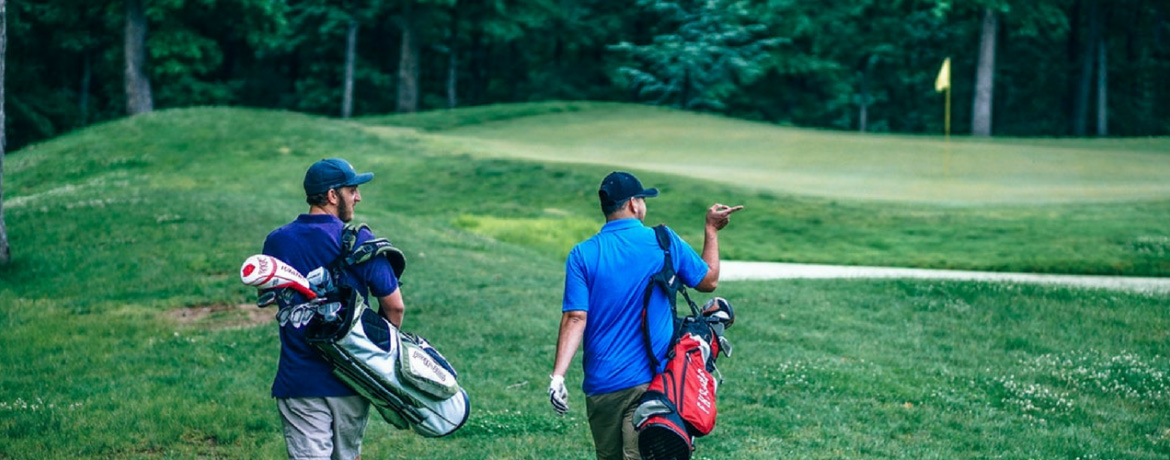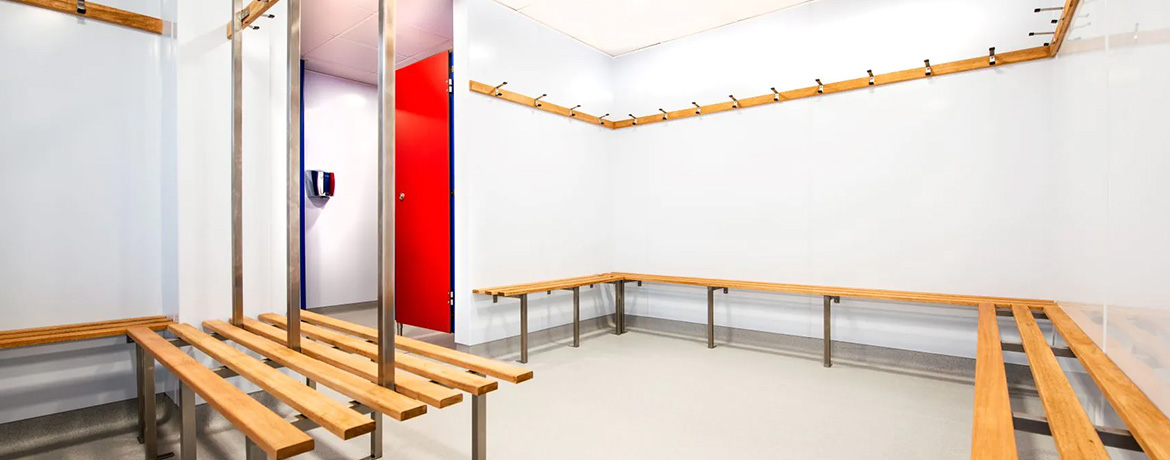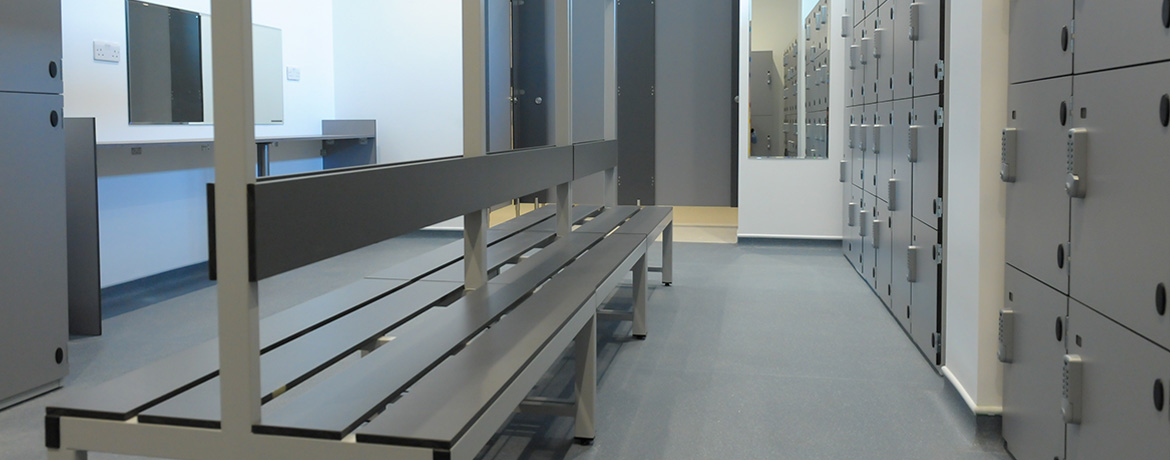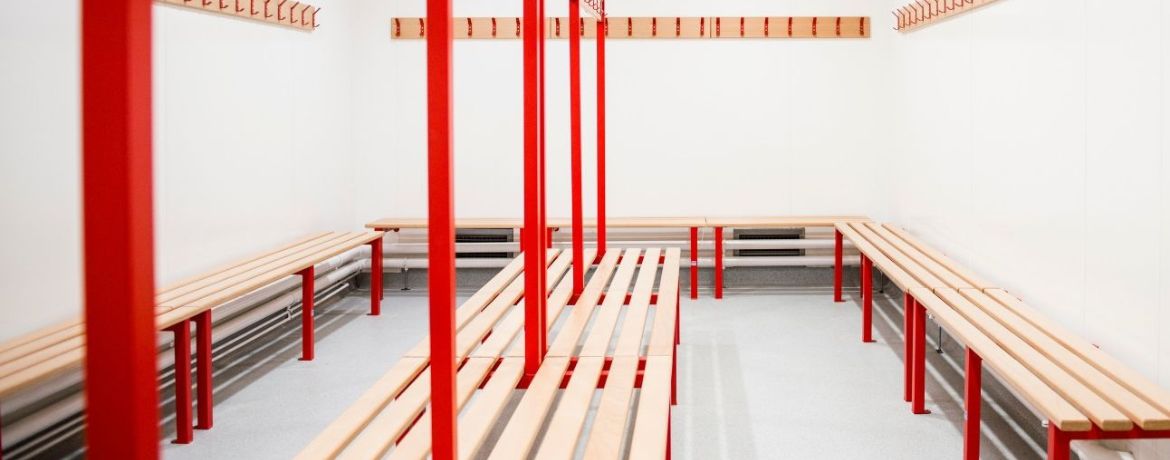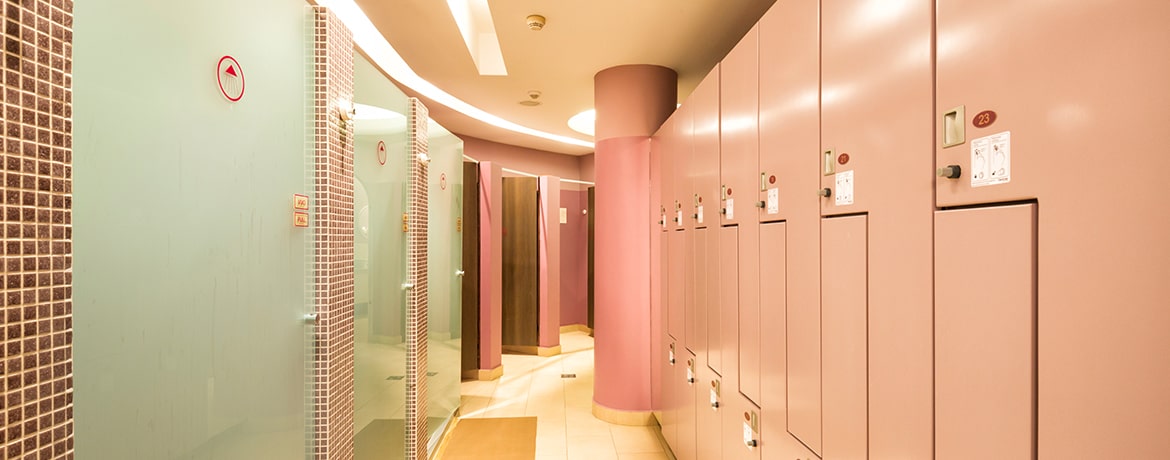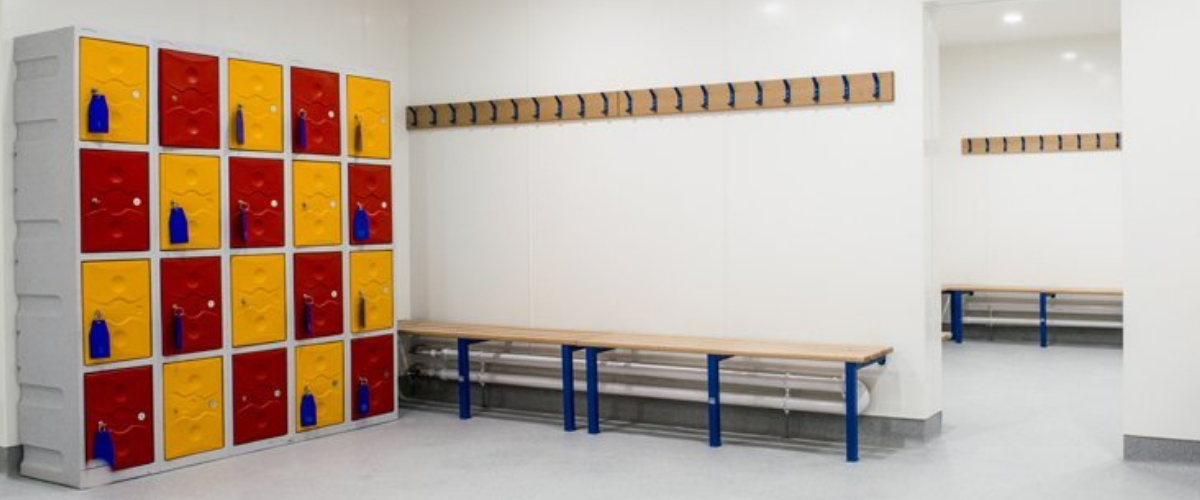10 Traits of Family Friendly Changing Rooms

Today, changing rooms need to meet the needs of the modern user and steps to make your facilities more family friendly are a strong, sensible move. In many cases, providing just one singular changing room that is both unisex and family friendly is a popular move. Here we take a look at ten traits of well-planned family-friendly changing rooms.
1. Space
One thing that’s essential for users wrangling young children, is space. Along with extra bags, users might need space to put their infant children while they get changed themselves and with many parents bringing more than one child into swimming pool changing rooms, space could be the reason why a family choose your facilities over your competitors. However, this is not to say smaller washrooms can’t be successful, the important thing to bear in mind is the way in which you use the available space. With careful planning and clever design, even the pokiest of changing rooms can be built with the whole family firmly in mind.
2. Playpen
Usability in washrooms is all about making things easier for the user and in family-friendly washrooms, the playpen can be hugely advantageous. Solid playpens can come in a number of colourful options, but there are two key features you need to bear in mind. Firstly, it needs to be incredibly hard wearing, and second, it will need a non-slip surface inside, to prevent children from falling. You’ll also find most changing room appropriate playpens are also very easy to clean due to their minimalistic design.
3. Baby changing
It goes without saying that any family friendly washroom needs to place baby changing facilities high in its specification. In the changing room environment, it is not uncommon to have them fitted into every changing cubicle. Alternatively, you could create a dedicated space, installing a group of solid surface baby changing stations. If doing so, give thought to ample waste disposal (with a lid to trap nasty smells) and lighting. Users will also require space to place their changing bag or spare clothes.
4. Child seats
While a playpen is ideal for children of a certain age, some infants won’t be so easily put down. Child seats provide a safe, secure, strapped-in solution for parent or carers to put their child while getting changed, or cleaned up themselves. These have also become a common fixture in shopping centre washrooms.
5. Drainage
This is a big one, an integral element of your changing room that should never be overlooked. Your drainage needs to able to withstand all the water being used by the showers, toilets and wash basins at once, so if you are expanding on your current facilities, this needs to be tested and checked first. You should also look into fitting gulley drains within the floor of your changing room so that you have no sitting water as this can be a slip hazard, but also somewhere children who have changed into clean clothes, could become wet again.
6. Cubicles
Some of the very best family-friendly changing rooms are unisex and feature many large formats changing cubicles that are big enough for a single family to change in. These large cubicles will house a changing bench as well as a fold-down baby changing unit. Solid grade laminate (SGL) is perhaps the most sensible material to have your cubicles built from, as it is completely impervious to water and comes in a huge range of colours and finishes. This means you are left with cubicles of an incredibly hard-wearing nature, and you can tie them into to your centres colour scheme easily too.
7. Lockers and storage
Be generous with storage space. Families tend to prefer using one locker, so will most likely prefer one that will house two to three changing bags. While metal might be the traditional choice, solid grade laminate is increasingly popular due to its durability and waterproof properties. By using this material you can also match the colour exactly to that of your SGL cubicles, making for a smarter, neater, seamless finish.
8. Low-noise hand dryers
The sound of hand dryer can be scary for some children and very troublesome for those on the autistic spectrum. However, installing low-noise hand dryers can help alleviate this problem and has become a popular choice in nursery and pre-school washroom installation.The Biodrier Hand Dryer is another fun option, being manufactured specifically for children. Alternatively, you could go for paper hand towels, although this option means you will need to keep them topped up, and factor in adjacent waste disposal for used towels.
9. Benches
When wrangling small children in a busy, wet changing environment, users need somewhere to put their dry clothes, not to mention their dry children. We’ve already covered the importance of benches within family changing cubicles, but for those centres where private changing cubicles aren’t the only option, ample changing benches need to be provided. This could be in the form of a large island type structure in the centre of the room or perimeter benches with hooks above.
10. Low height fittings
You’ve installed a wonderful new changing room with the whole family in mind. Don’t forget the small stuff though like installing a few washbasins and urinals to a lower level so that children can access them independently. The choice to install things at a lower height can also be followed through into showering facilities, hand dryers, mirrors and even communal changing benches in the centre of the room.
As always, our team are at the end of the telephone for all your queries and questions and have a wealth of knowledge they’re happy to share with you. So if you need some guidance, or would like to talk over your options, you can give them a call on 01202 650900.
Got a question? Get in touch

